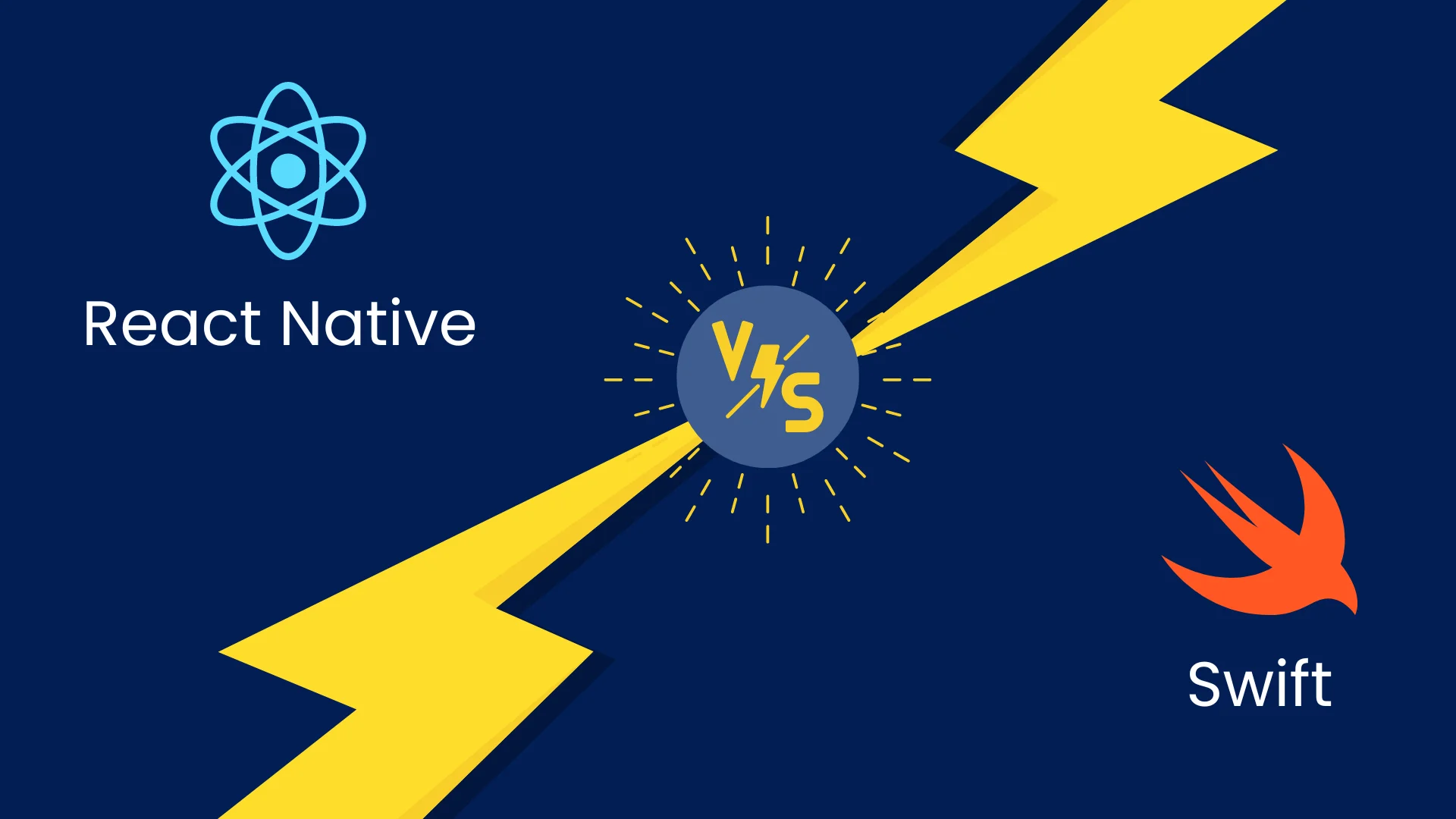In the ever-evolving landscape of iOS development, staying updated on the latest trends is imperative for developers and businesses. The realm of iOS app development is witnessing significant shifts, and developers are faced with the perpetual choice between native and cross-platform frameworks. In 2024, React Native and Swift remain at the forefront of this conversation, each providing distinct advantages and addressing different aspects of the dynamic mobile development landscape.
Mobile applications are getting increasingly more popular day by day. The two most popular choices for developing iOS apps are JavaScript-based React Native and Apple-developed framework for iOS, Swift. React Native versus Swift a choice for iOS app development and several factors driving the project like developer skills, cost talent availability, app complexity, and ease of future integrations need to be accounted for.
Swift: The Native Powerhouse
Performance Prowess:
Swift, Apple’s native programming language, has long been synonymous with performance excellence. It is popular for its speed and efficiency, Swift empowers developers to craft high-performance, natively integrated applications tailored for the iOS ecosystem. Swift, an Apple-born programming language, emerged as the successor to Apple’s previous language, Objective-C. Developers favor Swift due to its intuitive nature, aligning well with Apple’s ethos.
Native Integration:
Swift seamlessly integrates with Apple’s APIs and libraries, providing direct access to the latest iOS features. This native integration ensures that your app can harness the full potential of Apple devices, delivering a polished and immersive user experience.
Community and Support:
Swift’s status as the officially endorsed language for iOS development translates into a wealth of resources, regular updates, and an active developer community, ensuring your projects are backed by a strong foundation.
React Native: Cross-Platform Versatility
React Native is a Javascript framework suitable for building applications for both iOS and Android. The strength of React Native lies in its capability to support cross-platform development. Developers can write reusable code for different platforms with React Native reducing cost and saving on development time.
Cost-Efficient Development
React Native, born from Facebook’s innovation, stands out for its cross-platform capabilities. For businesses mindful of development costs and timelines, React Native offers an efficient solution by allowing developers to write code once and deploy it on both iOS and Android platforms.
Reusable Components:
One of React Native’s strengths lies in its ability to reuse components across platforms. This not only accelerates development cycles but also ensures consistency in functionality and appearance, a crucial factor in delivering a seamless user experience.
Growing Ecosystem:
React Native’s thriving ecosystem speaks to its popularity and the collaborative spirit of its global community. At 5ine, we recognize the importance of staying on the cutting edge, and React Native’s growing ecosystem aligns with our commitment to delivering innovative and efficient solutions.
Hybrid Approaches: The Intersection of Swift and React Native
As we navigate 2024, a fascinating trend emerges – the convergence of Swift and React Native. This hybrid approach seeks to capitalize on the strengths of both frameworks, providing developers and businesses with a versatile toolkit for diverse project needs.
Native Modules in React Native:
Integrating Swift-native modules within a React Native project allows developers to leverage Swift for performance-critical tasks while still benefiting from the efficiency of React Native for broader application development.
SwiftUI Integration:
SwiftUI, Apple’s declarative UI development framework, integrates seamlessly with Swift, offering a modern and efficient way to build user interfaces. This integration allows developers to leverage SwiftUI for UI components while relying on Swift for the underlying logic.
Summary
As we step further into 2024, the iOS development landscape presents a myriad of possibilities. The success of an iOS development project hinges on understanding the unique requirements and leveraging the most suitable tools available, ensuring that applications meet both user expectations and business objectives in this ever-evolving technological era. 5ines understands the pivotal role of iOS app development trends in shaping the success of your projects. Whether it’s harnessing the native power of Swift for performance-critical applications or exploring the versatility of React Native for cross-platform efficiency, our team is adept at crafting solutions tailored to your unique requirements.
Embark on your iOS development journey with 5ine: where innovation meets expertise, and your vision becomes reality. Contact us today to explore the right path for your app development endeavours.





